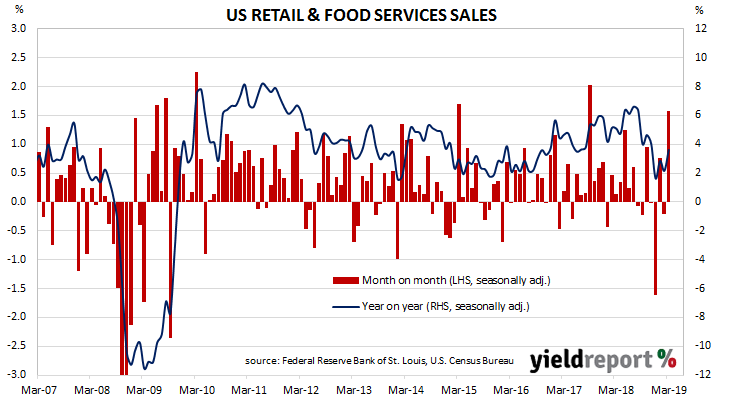US retail sales have been trending up since late 2015. While there have been patches of weakness along the way, later months’ figures have rebounded to higher levels. After reaching an annual growth rate of 6.6% in July 2018, subsequent sales figures formed a downtrend which brought the annual rate below 2.0% by the end of the year. Since then, growth across the March quarter has generally been quite strong.
According to the latest “advance” sales numbers released by the US Census Bureau, total retail sales jumped by 1.6% in March, or double to +0.8% which had been expected and a marked reversal from February’s figure of -0.2%. On an annual basis, the growth rate increased to 3.6% from 2.2%.
Financial markets reacted in a subdued fashion but, by the end of the day, yields on 2-year were unchanged at 2.39% while 10-year and 30-year Treasury bonds had each lost 3bps to 2.56% and 2.96% respectively. Prices in the futures market for federal funds were not largely affected but the likelihood of a rate cut at the FOMC’s December meeting were trimmed from 43% to 41%.
The “motor vehicle and parts dealers” segment had the largest influence during the month by far. It increased by 3.1% over the month but only managed a 12-month growth rate of 3.8%. The next largest influence came from the “gasoline station” segment with a 3.5% increase over the month. The non-store segment grew again, this time by 1.2% over the month and 11.65 over the last year. This segment includes vending machine sales, door-to-door sales and mail order sales but nowadays this segment has become dominated by online sales.

